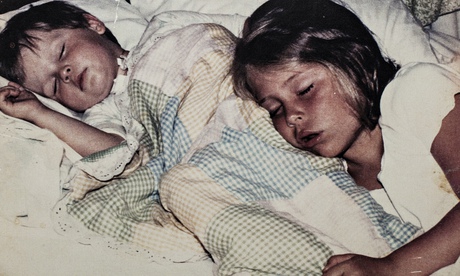
In 2010, Laia Abril started a project on eating disorders with a multimedia piece called A Bad Day. It looked head-on at the daily life of a girl struggling with bulimia and was a wilfully uncomfortable experience. Out of that came a self-published 'zine, Thinspiration, in which Abril documented the controversial Pro-Ana community which, in her words, "has turned anorexia (Ana) into its dogma" and where activists "venerate the illness giving meaning to their totalitarian 'lifestyle'."
After much reflection, the Spanish documentary photographer shifted her gaze once more from what she calls "the uncomfortable aspects (of eating disorders) which nobody wanted to talk about" to "the collateral victims" of the illness. So began a long period of research that has culminated in a sombre and affecting photobook called The Epilogue.
As the title suggests, the book is all about the aftermath of the death of a young woman with an eating disorder. Her name is Mary Cameron Robinson, known to her family and friends as Cammy. She died of cardiac failure on 2 September 2005 in Chattanooga, Tennessee. In order to tell Cammy's story, Abril first emailed "hundreds of associations, foundations, therapists and individuals" including Jan Robinson, Cammy's grieving mother, who, she says, "understood right away my intention with the project, probably because their own healing process involved creating a small foundation in her daughter's name."
The Epilogue is a story told in visual and written fragments. Alongside Abril's own photographs, mainly of landscapes associated with Cammy's life, she includes family snapshots, video stills from home movies, oral testimonies from family members and close friends, diary entries by Cammy, official documents – birth and death certificates, medical records – and various items.
It is a dense and rewarding evocation of grief, survival and the still-raw trauma of a family coming to terms with the loss of their most troubled loved one. The Epilogue is a book about absence, but it is also informed by Cammy's abiding presence: her energy, her wilfulness, her often clandestine struggle with a disorder that derailed her life and capsized the lives of those around her.
At times, it makes for a painful read. Friends revisit times they confronted her about her illness and her often plaintive responses – "I know I'm too skinny. I know and don't want to be this way, but I don't know how to get better." From time to time, I had to put it down, take a breather. But I kept going back.
The Epilogue holds fast to the formal rules of a certain kind of posthumous biography told though first-person testimonies. Jean Stein and George Plimpton's Edie, which reconstructed the turbulent life of Warhol's doomed "superstar", Edie Sedgwick, springs to mind. But the images and ephemera give it another level of poignancy, accentuating the sense of deep absence family anecdotes now carry.
The book's meticulous design is crucial to the slowly unfolding narrative. Abril worked with art director Ramon Pez. The two also worked on the design of Cristina de Middel's groundbreaking self-published book, The Afronauts. Throughout, they employ narrative interruptions – pull-outs, inserts, concertinaed pages – that correspond to pivotal points in Cammy's life, so hers becomes a narrative you have to engage with in a very real and tactile way.
Abril says that they took inspiration "from diaries, from genealogical albums, from the visual language of psychological reports, investigation documents, a specific selection of 80s American movies, country songs … anything that could help us suggest to the reader the kind of environment of Cammy's story."
The Epilogue is loaded with information as well as anecdotes, so its design is crucial in nudging the reader forward into a world both recognisable – the intense bonds and fractures of family life – and alien – the torturously warped inner logic that underpins an eating disorder and that has its roots in that family dynamic.
Perhaps the most affecting testimony of all is Jan Robinson's acknowledgment: "The girl we thought we knew was not. To be perfectly honest I don't think I ever knew Cammy." It is that sad epiphany that lingers when you finish The Epilogue: the possibility that those we are closest to may turn out to be the very people we know least of all.
Ironically, The Epilogue has an epilogue of its own, tucked in and almost hidden away. Just as she was about to print the book, Abril received an email from Cammy's father with an attached photograph. It shows Cammy's brother, Tommy, his wife, Kristen, and their newborn daughter. Beneath it are the words: Sybil Bird Robinson, born May 2014, 35 years to the hour after Mary Cameron Robinson (Cammy).
• The Epilogue will be published in September by Dewi Lewis Publishing, £35

